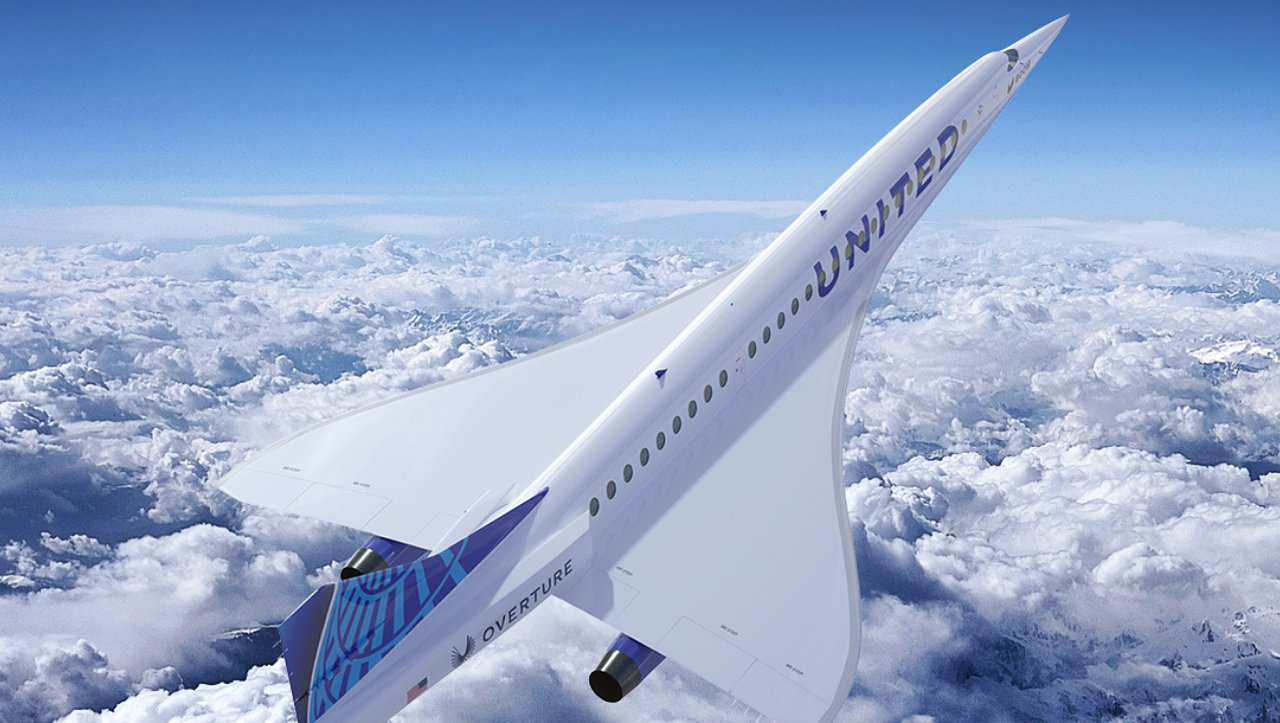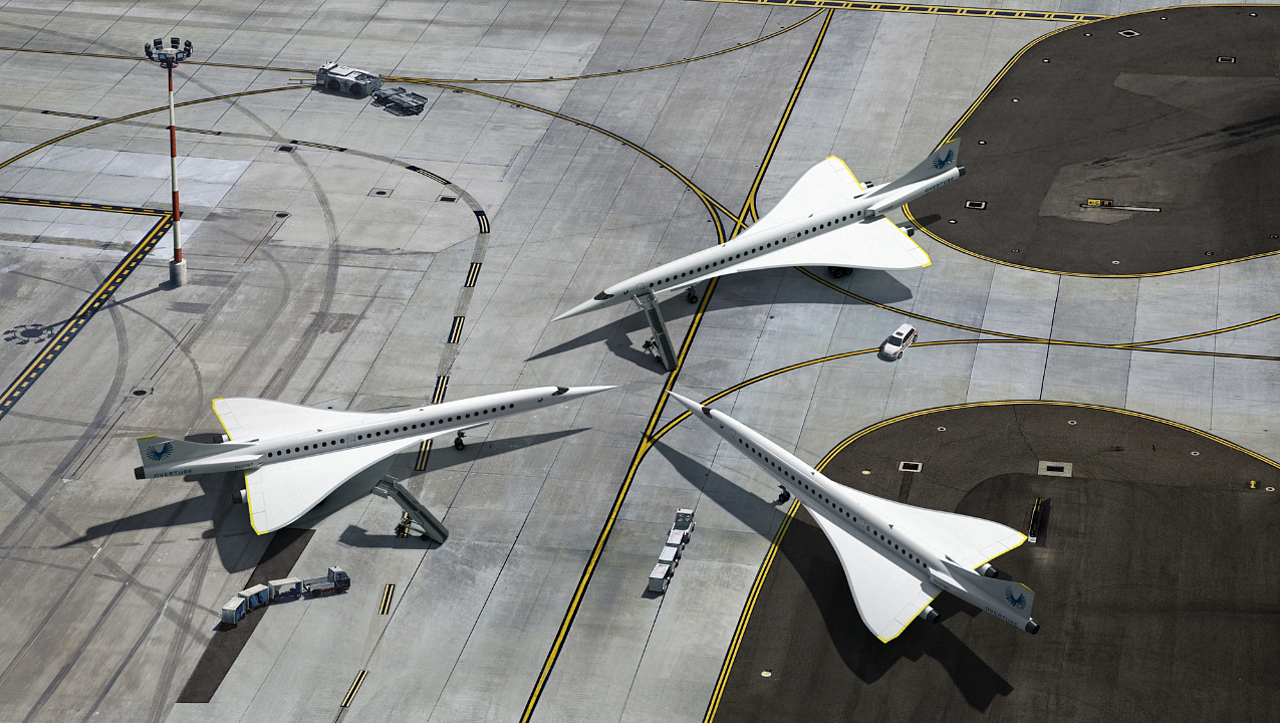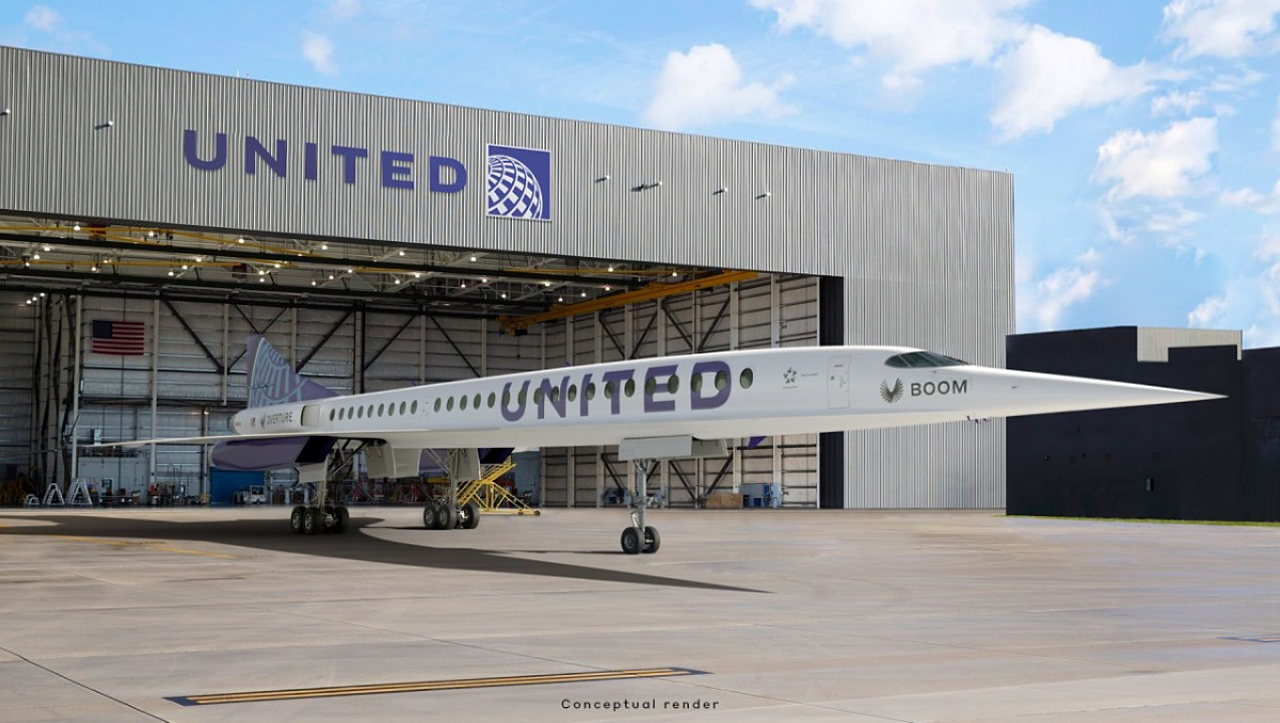
Supersonic commercial air travel has always attracted enormous interest amongst frequent fliers, and to date, this need has only been met by one aircraft, the Anglo-French Concorde. However, for high-flying business executives and the well-heeled, the option of flying supersonic came to an end in 2003, when British Airways and Air France announced the retirement of their Concorde fleets.
It now appears that supersonic commercial air travel could make a reappearance, albeit only by the end of the decade withDenver, USA based aerospace company Boom Supersonic’s Overture Supersonic jetliners. The company’s highly ambitious supersonic commercial jetliner is being designed to achieve Mach 1.7, twice the speed of today’s fastest jetliners and fly at an altitude of 60,000 feet, twice as high as commercial jetliners today. The high operating altitude also means that passengers will experience less turbulence and a smoother ride while travelling.
At supersonic speeds, Overture will significantly reduce travel times for future potential routes for many of the world’s airlines by half. For example, the distance between world hubs such as Seattle and Tokyo could be completed in just six hours instead of ten, while a flight from Tokyo to Honolulu would take four hours instead of eight. Flying from Newark to London will take just 3.5 hours, Newark to Frankfurt will take four hours and passengers can travel from San Francisco to Tokyo in just six hours.

Supersonic Buy In
In June, United Airlines announced the world’s first purchase agreement for a net-zero carbon supersonic aircraftwith a commercial agreement with Boom Supersonic for 15 Overture airliners and options for 35 more aircraft.Japan Airlines had entered into a strategic partnership with Boom in 2017, investing $10 million with options to purchase up to 20 Overture aircraft. The Japanese carrier would share its expertise and perspective on flight operations and the inflight experience with Boom.
United’s purchase of 15 of the supersonic commercial jetliners is contingent on Boom being able to meet United’s demanding safety, operating and sustainability requirements. Following the recent agreement, both companies will now work together to meeting these requirements before delivery. “United continues on its trajectory to build a more innovative, sustainable airline, and today’s advancements in technology are making it more viable for that to include supersonic planes. Boom’s vision for the future of commercial aviation, combined with the industry’s most robust route network in the world, will give business and leisure travellers access to a stellar flight experience,” United CEO Scott Kirby said.

“This partnership is about more than speed — it’s about what speed enables. United and Boom share a vision: we believe in a world where more people can go to more places more often. That’s a better world for us all, unlocking new possibilities for business relationships, prospects for vacation, and opportunities for human connection. The speed of air travel is key to enabling all of that,” says Boom Founder & CEO Blake Scholl. Travellers can not only get to their destinations quicker with supersonic transport, but the ability to return home sooner is also an essential consideration for many business travellers.
Supersonic commercial flight has many challenges, however, chief among them being noise restrictions which do not permit civil supersonic flight over land. Both the US Federal Aviation Administration (FAA) and European Aviation Safety Agency (EASA) allow civil supersonic flight only over the oceans. Current regulations do not permit civil supersonic flight over land, and the subsequent overland sonic boom is unlikely to change in the future.
Futuristic design
Boom states that the first prototype features a distinctive design reminiscent of the Concorde, with a sharp nose, slender fuselage, and a high-efficiency delta wing that will roll out in 2025. Overture’s engine programme and advanced preliminary design are underway in 2020. The first flight is planned for 2026. Flight testing with passengers onboard the aircraft is scheduled for 2029. Boom is also currently flight testing the XB-1, a technology demonstrator aircraft that rolled out in 2020.

In addition to the technological challenges of designing a supersonic commercial jetliner, which can handle the rigours of regular commercial airline service, “we are designing Overture so people can travel more often — without worrying about environmental impacts. Throughout Overture’s lifecycle — from maximising fuel efficiency in aircraft design to accommodating 100% sustainable aviation fuels to facilitating aircraft recycling — we are ensuring that Overture achieves the highest levels of sustainability,” says Scholl.
Boom was the first aerospace OEM to sign the Amazon Climate Pledge and is also designing Overture to be the first large commercial aircraft optimised for flying on 100% Sustainable Aviation Fuel (SAF), making it net-zero carbon from day one of operational service.
Boom’s order book for Overture includes purchases and options for 70 aircraft, and it is also working with the United States Air Force for government applications of the supersonic aircraft.
All Images courtesy Boom Supersonic.